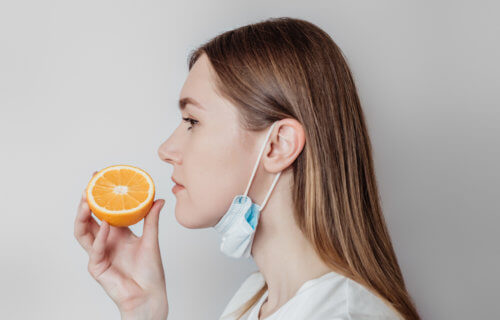CHICAGO — A new 10-minute treatment can potentially restore the sense of smell in patients suffering from long-term olfactory dysfunction prevalent in the aftermath of COVID-19.
While the majority of COVID-19 patients eventually regain their sense of smell, a subset with long COVID experience persistent symptoms for an extended period following the initial infection. This sensory loss, known as parosmia, can detrimentally affect their appetite and overall life quality.
“Post-COVID parosmia is common and increasingly recognized. Patients can develop a distaste for foods and drinks they used to enjoy,” says Professor Adam Zoga, the lead author, in a media release. “Parosmia has previously been reported as a rare disorder occurring after brain trauma, brain surgery, stroke, viral syndromes, and with some head and neck tumors. We were not entirely confident that the procedure would work for parosmia.”
The innovative treatment entails a precise CT-guided injection of anesthetic into the stellate ganglion, located in the neck, to activate the autonomic nervous system. This quick, non-sedative procedure has also been employed for other conditions, such as cluster headaches and cardiovascular issues.
Key Takeaways:
-
A minimally invasive, 10-minute procedure may restore the sense of smell in patients with long COVID
-
For the study, 54 patients were treated with a stellate ganglion block, which includes injecting anesthetic directly into the nerves on one side of the neck to stimulate the nervous system
-
After a one-week follow-up, 59% of patients reported improvement in symptoms
To address potential nerve inflammation caused by the COVID virus, a small dose of corticosteroid was combined with the anesthetic. In the study, 54 patients with persistent post-COVID parosmia, unresponsive to other treatments, were referred by an ear, nose, and throat specialist.
“The initial patient had a tremendously positive outcome, almost immediately, with continued improvement to the point of symptom resolution at four weeks,” says Professor Zoga. “We have been surprised at some outcomes, including near 100% resolution of phantosmia in some patients, throughout the trial.”
Out of 37 patients followed up, 22 reported symptom improvement within a week of the injection, with 18 of those experiencing significant ongoing improvement after a month. Notably, the procedure was free from complications or adverse events.
This research will be presented at the annual meeting of the Radiology Society of North America (RSNA) in Chicago.
South West News Service writer Isobel Williams contributed to this report.
